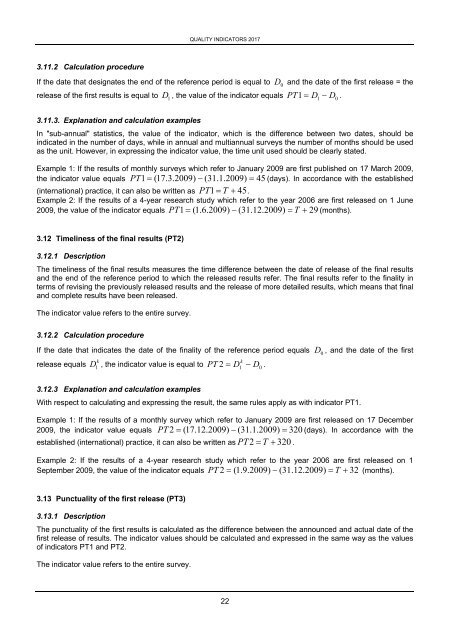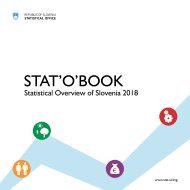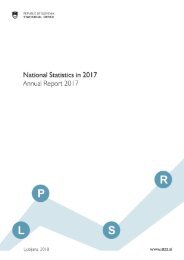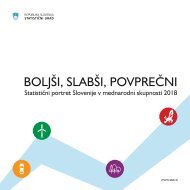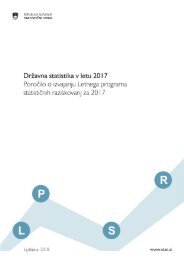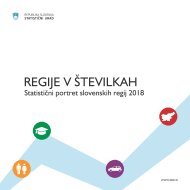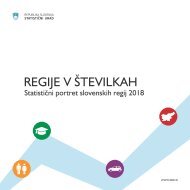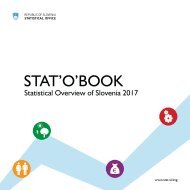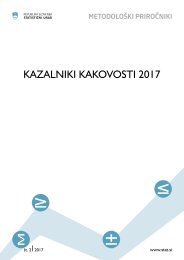quality-indicators-2017
You also want an ePaper? Increase the reach of your titles
YUMPU automatically turns print PDFs into web optimized ePapers that Google loves.
QUALITY INDICATORS <strong>2017</strong><br />
3.11.2 Calculation procedure<br />
If the date that designates the end of the reference period is equal to D<br />
0<br />
and the date of the first release = the<br />
release of the first results is equal to D<br />
1<br />
, the value of the indicator equals PT1 D1<br />
D0<br />
.<br />
3.11.3. Explanation and calculation examples<br />
In "sub-annual" statistics, the value of the indicator, which is the difference between two dates, should be<br />
indicated in the number of days, while in annual and multiannual surveys the number of months should be used<br />
as the unit. However, in expressing the indicator value, the time unit used should be clearly stated.<br />
Example 1: If the results of monthly surveys which refer to January 2009 are first published on 17 March 2009,<br />
the indicator value equals PT 1 (17.3.2009) (31.1.2009) 45 (days). In accordance with the established<br />
(international) practice, it can also be written as PT 1 T 45.<br />
Example 2: If the results of a 4-year research study which refer to the year 2006 are first released on 1 June<br />
2009, the value of the indicator equals PT 1 (1.6.2009) (31.12.2009) T 29 (months).<br />
3.12 Timeliness of the final results (PT2)<br />
3.12.1 Description<br />
The timeliness of the final results measures the time difference between the date of release of the final results<br />
and the end of the reference period to which the released results refer. The final results refer to the finality in<br />
terms of revising the previously released results and the release of more detailed results, which means that final<br />
and complete results have been released.<br />
The indicator value refers to the entire survey.<br />
3.12.2 Calculation procedure<br />
If the date that indicates the date of the finality of the reference period equals D<br />
0<br />
, and the date of the first<br />
k<br />
release equals D 1<br />
, the indicator value is equal to PT 2 D<br />
k 1<br />
D0<br />
.<br />
3.12.3 Explanation and calculation examples<br />
With respect to calculating and expressing the result, the same rules apply as with indicator PT1.<br />
Example 1: If the results of a monthly survey which refer to January 2009 are first released on 17 December<br />
2009, the indicator value equals PT 2 (17.12.2009) (31.1.2009) 320 (days). In accordance with the<br />
established (international) practice, it can also be written as PT 2 T 320 .<br />
Example 2: If the results of a 4-year research study which refer to the year 2006 are first released on 1<br />
September 2009, the value of the indicator equals PT 2 (1.9.2009) (31.12.2009) T 32 (months).<br />
3.13 Punctuality of the first release (PT3)<br />
3.13.1 Description<br />
The punctuality of the first results is calculated as the difference between the announced and actual date of the<br />
first release of results. The indicator values should be calculated and expressed in the same way as the values<br />
of <strong>indicators</strong> PT1 and PT2.<br />
The indicator value refers to the entire survey.<br />
22


